When I was a kid, my friends and I had the run of four or five hundred acres of timber on the ragged edge of the bluffs overlooking the Mississippi River north of St. Louis. It was a marvelous playground with opportunities for diversion, recreation, and moderate to serious injury that were limited only by a kid’s imagination.
One of our favorite pastimes was scouting along the steepest slopes in search of a robust wild grape rooted in the forest floor, its vine climbing up into the branches of one of the red oaks that dominated the hillside timber, its tendrils attached seventy or eighty feet above in the canopy. We cut the vine at ground level, pulled it up the hill, and took turns swinging out toward the creek below. The steeper the slope, the higher the swinger was above the ground. Great fun.
What we didn’t immediately recognize was the fact that cutting the vine killed it.
So it was that three or four of my buddies and I took off into the woods on a warm Saturday afternoon in April with the jack-in-the-pulpits pushing up through the leaf litter and the scent of spring on the breeze, to visit our favorite vine swing. Nothing else we’d found over the previous two summers could compete with this one— exceptionally long and situated near the top of a particularly steep ravine, providing users with maximum altitude while airborne. With some difficulty, I talked my way to the head of the line and pulled the butt of the vine as far as it would reach up the hill. With a whoop and a rush, I left the ground with great expectations, lifting off and swooping to the far end of the arc— where the last of the brittle twigs holding the dead vine to the treetop gave way and I found myself in freefall.
It was a long way down. If the ground had been flat, I’m fairly certain I would have broken my back. As it was, I hit on the steepest part of the hill and felt all the vertebrae in my spine stack up in the impact and the breath leave my lungs as I slid to a stop, thirty feet below. My friends hurried down to see whether I was alive, and when I managed a first gasp, they collapsed in hilarity. Such is the sympathy a kid gets from his peers.
The risk had been there all along, of course. The attachment of the vine in the canopy had not been inspected, tested, or approved for swinging in the beginning, and, as the green branches of the grape slowly dried and became brittle in the treetop, the chances of breakage increased at some unknown rate. After I got my breath back and my companions stopped laughing, we all agreed we should confine our swinging to vines that had been cut for less than a year, to make sure the attachments up above were still relatively green and intact. Of course, the idea of giving up the swinging altogether never occurred to any of us.
Many years later, I stumbled across an observation of Ben Franklin’s that seemed to fit the kinds of risk we took as kids. “Experience keeps a dear school,” he wrote in Poor Richard’s Almanac, “but fools will learn in no other.” Or as a farmer of my acquaintance once told me, “You can learn a lot in the school of hard knocks, but the tuition sure is high.”
As I contemplate the ebb and flow of human affairs, I’m often reminded of that grapevine. We give ourselves quite a bit of credit for rational analysis, which may well be the case in the fields of chemistry, particle physics, and higher mathematics. But, as a species, we seem to be remarkably inept at assessing risk. Here in Wyoming, I’ve often heard tourists ask, with great trepidation, whether they are likely to meet a grizzly on a hiking trail, while casually dismissing the danger of driving 2,500 miles from Ohio to Yellowstone. To further confound matters, a few of these bear-o-phobes seem completely comfortable with the idea of cuddling up to a 2,500-pound bull bison along a boardwalk in the park, just to get a picture.
We’re hard-wired to assess some kinds of risk. We flinch at unexpected loud sounds, snatch our hands back from hot surfaces, blink when a twig flicks at our eyes. But we seem to struggle to assess situations in which the consequences of our actions— or lack of action— don’t follow immediately after our mistake. Overeating, smoking, lack of exercise, sex without birth control, driving too fast on an icy road— the risk of ignoring consequences can be substantial, but it’s easy to do when the decision is separated from the effect by minutes, months, years, or even decades.
The risk of COVID-19 is just the kind we struggle to assess. A person may not experience symptoms for up to fourteen days after exposure, by which time taking precautions to avoid exposure just won’t help. And, hey, most people who contract COVID-19 get better after a week or two. Heck, some people apparently don’t even get sick. Unfortunately, by the time a person knows he’s sick, there’s no way to alter the course of the disease. It’s like running down a hill, holding onto the end of a wild grapevine. Once you leave the ground, what’s going to happen is going to happen, whether you have second thoughts or not.
There are people in America who have convinced themselves that there is no risk from the pathogen that causes COVID-19. Pastors of fundamentalist congregations who insist on holding services, apparently secure in the notion that God will protect them and their parishioners. Right-wing anarchists who know, for a fact, that this is just another communist plot to overthrow the republic. And a fair number of just-plain folks who don’t know anyone who’s sick, haven’t seen anyone who’s sick, and figure that there will be plenty of time to take precautions when the next-door neighbor has to go to the hospital.
Fact is, we don’t have even the murkiest idea of the magnitude of the threat COVID-19 poses. We don’t have the first clue how many people are actually infected, and the reported mortality is certainly lower than the actual death toll, since we haven’t had enough testing materials to determine for certain that the coronavirus was actually the cause of every suspicious death.
We do know that COVID-19 has killed a lot of people — 171,810 worldwide, 42,458 in the United States, as of this writing — which would suggest that a certain degree of caution is called for, at least until we have a more accurate picture of the disease and its effects. While that view is nearly universal among medical professionals and the scientists who study disease outbreaks, it was definitely not shared by the Trump administration up until a couple of weeks ago, and may still not be fully appreciated by that group. One more failure in the assessment of risk.
As dangerous as this failure has been, it pales into insignificance compared to our failure to assess and respond to another area of risk: climate change. The problem is the same— a delay between the moment we make a mistake and the time when we feel its consequences. With COVID-19, it took Chinese officials several weeks to confirm that the disease was spreading rapidly from person to person. That delay probably allowed the virus to escape the area where it began and spread beyond the national borders of China. Then, there is the latent period between infection and the first symptoms of the disease. People may spread the virus for up to two weeks before they even know they’re infected.
With climate, the latency is much longer, decades, even generations. Scientists predicted the effects of massive combustion of coal, oil, and natural gas as early as 1895. By the 1960s, the likelihood of global warming had found its way into sanctioned federal reports written by some of the best scientific minds in the United States, and in 1988, the United Nations was concerned enough to form the Intergovernmental Panel on Climate Change. For the better part of a century, we did nothing.
Even now — 30 years after the experts with IPCC issued their first warning, 50 years after the American Petroleum Institute warned its supporters in the industry that burning fossil fuels could raise temperatures across the globe, 55 years after the U.S. President’s Science Advisory Council warned that our CO2 emissions could cause “marked changes in climate” — there are still people in America who have convinced themselves that there is no risk from climate change. Still a scattering of congregations who believe God will protect the faithful. Hard-liners who are convinced it’s just another communist plot to overthrow the republic. And a remarkable number of just-plain folks who haven’t bothered to notice the change in climate in their backyards and figure there will be plenty of time to take precautions when the reservoir that supplies their drinking water goes dry, when the creek out back rises past their basement windows, or when the hurricane or tornado is darkening the horizon.
The trouble with the school of hard knocks is that education doesn’t begin until the knocks are administered. In the case of COVID-19, we made several mistakes before the first hard knocks were apparent and persisted in our misbehavior even as people in other parts of the world began to absorb the punishment that inevitably follows errors in the management of a communicable disease. For that intransigence, many Americans will pay with their lives. If you want to head off a pandemic, you’d better be well educated before the first hard knock. I hope our experience with COVID-19 will leave us better prepared for the next exotic disease.
With climate, we don’t get a second chance. The consequences of mistakes that have been made over the last century, and especially over the last thirty years, will be visited upon humanity, in spite of our best efforts to avoid them. Fools that we are, we find ourselves now in the school Ben Franklin described. He was dead right— it’s a hard school, with punishing lessons ahead that we won’t be able to avoid. As we grapple with the symptoms of that disease, I can only hope we also deal with the underlying cause so that our great, great grandchildren aren’t forced to bear the consequences of our foolishness.
And I hope we get better at assessing risk. Climate change isn’t the only dark cloud that hangs over our future as a species. We need to stop obsessing over minutiae and start addressing the really big problems we face. Before we can do that, we have to learn how to tell the difference.
Some of the most painful mistakes are the ones whose consequences are delayed. That’s worth bearing in mind when swinging on grapevines. Or just living in the modern world.




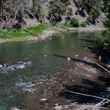
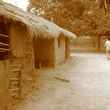
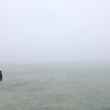
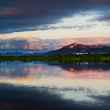



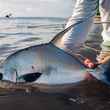
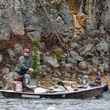



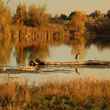
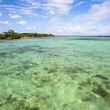



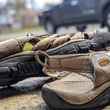
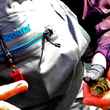



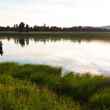


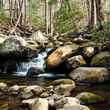
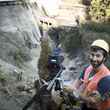
Comments
Jonas replied on Permalink
Love the perspective of Madsons words. He has always kept my attention when I get chance to read his wisdom. Keep them coming.
Paul D replied on Permalink
We humans, despite our big and impressive brains, have always had a hard time with more than short term thinking and planning, and it may be our undoing.
Pages